Japanese-style Apartment design usually begin with the selection of color scheme. Inspired by nature, the Japanese prefer mostly restrained light tones (milky, light beige and cream). These shades prevail when choosing the color of walls, furniture and fabrics. It should be noted that all surfaces in the apartment should be smooth. In general, this direction does not require much effort. Simply follow the correct color scheme and adhere to minimalism when choosing furniture. Japanese-style room design suggests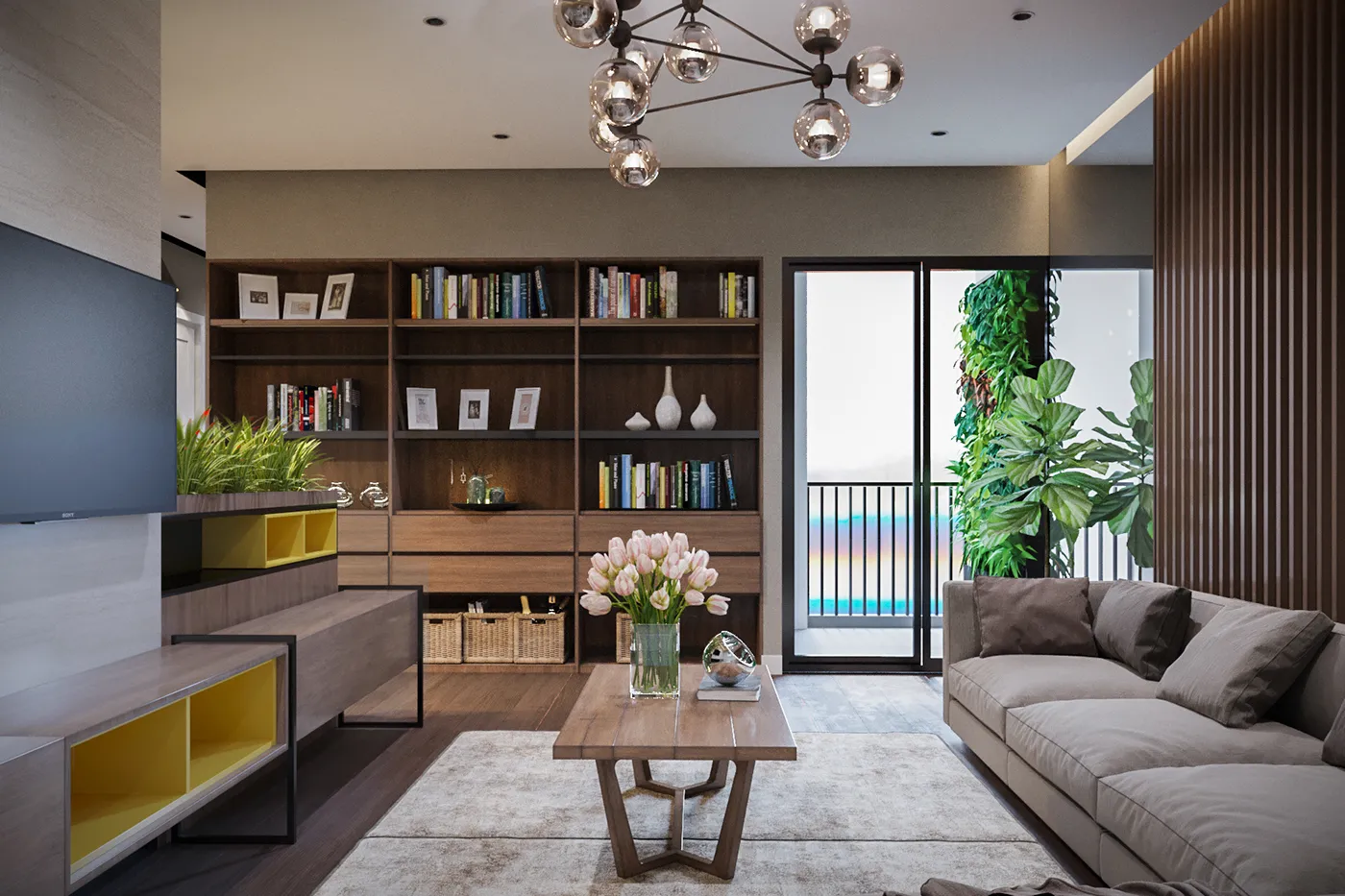
- Relax island in the center of the room
- Only necessary furniture of natural wood
- Vintage materials
- Bamboo sliding doors
- Mix of wooden, glass and metal elements
- Japanese-style ceilings are necessarily square or rectangular
Lighting in Japanese style
Lighting of this style is of particular importance. Different kinds of lights are able to create a peaceful, relaxed atmosphere in the room in the spirit of Zen philosophy. Pay attention to the modern ceiling lights under the “Shoji”. They are covered with paper, which is a mixture of cellulose and polyester, therefore it lasts longer. To create diffused lighting, you can choose bamboo table lamps or tatami lamps.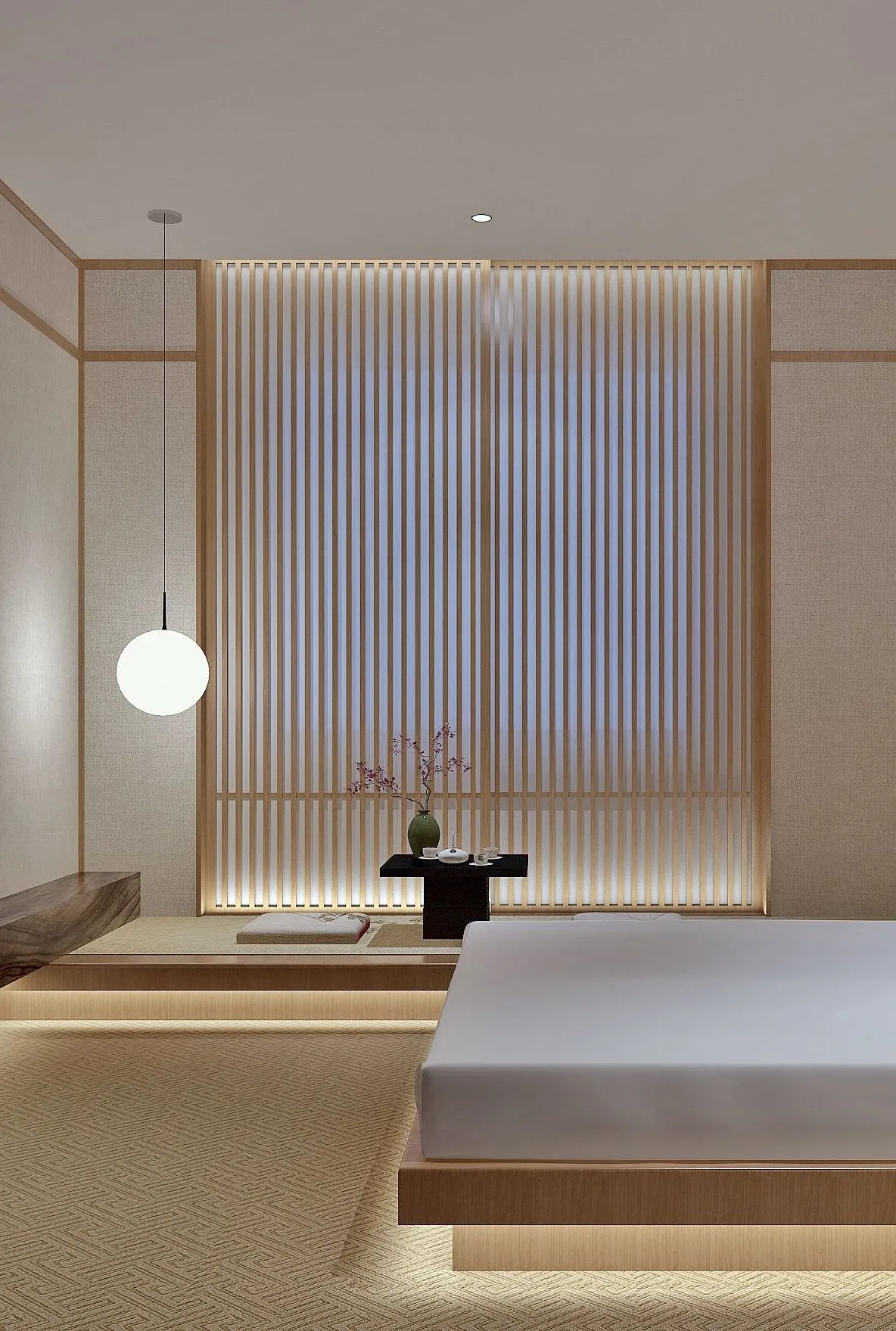
Pendant lights will also be a great choice. They are ideal for any space. Initially they were made of copper and they consisted of 4-6 sides. Today, these Japanese-style chandeliers and lamps are made of paper, glue and bamboo. Usually, they are placed in well-lightened corridors.
Japanese style house
The main features of a traditional dwelling: privacy, natural light, protection from the elements and close contact with nature, regardless of the size of the house and its location. Most city dwellers cannot afford homes for themselves because of limited land in the country, but Japanese apartments usually contain traditional elements such as a jacuzzi and a staircase entrance. The interior of the house often involves a single room with tatami. Elements of traditional interior design, inspired by Western architects for a long time, can be found all over the world.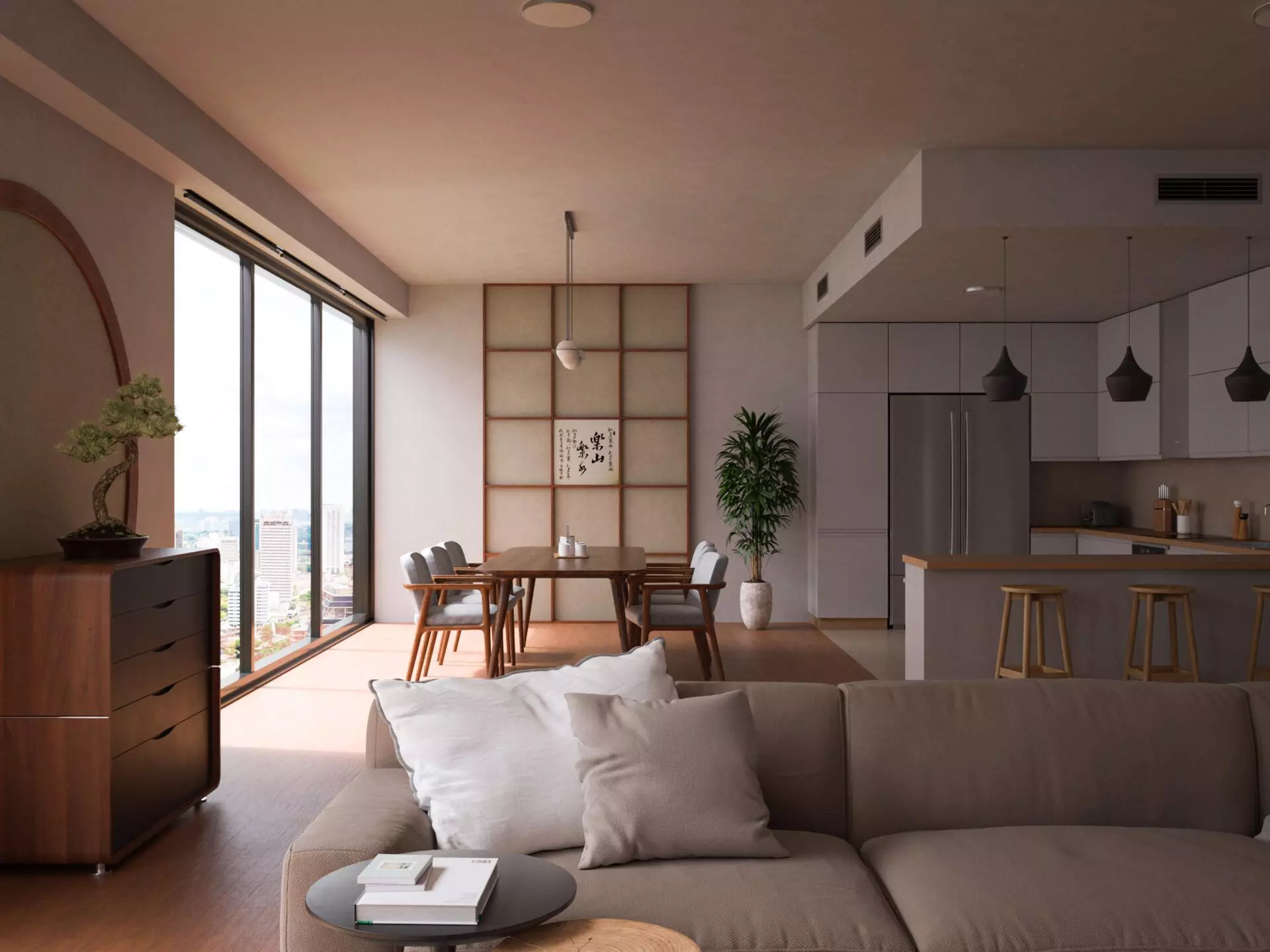
Japanese style Bedroom
The right way to design a bedroom is to start from the floor, gradually moving up. Mat-tatami is ideal to cover the floor. Traditional tatami mats are made of rice straw and are very comfortable to walk without shoes. If there are no tatami to cover the entire floor, just lay a small tatami mat in front of the bed.Furniture that is used in oriental culture has low legs. Therefore, a Japanese-style bed for a themed room should be as low as possible. Complete the bed with bamboo details and place the basic lacquered chest of drawers next to it. Instead of a bed, you can put a mattress right on the floor.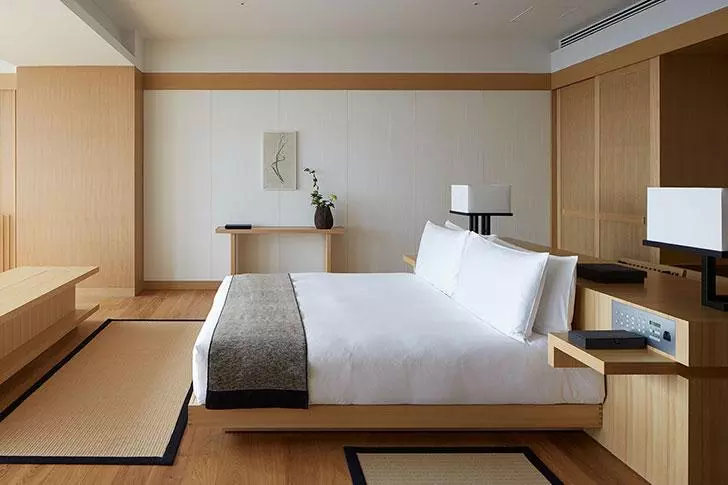
When choosing furniture, it should be remembered that all items of furniture in the bedroom should meet only functional needs. Therefore, do not clutter up the space, leave only the most necessary decor items. The interior design of bedroom in the Japanese style does not tolerate excess.Decorative items made from natural materials such as bamboo, rice paper or wood, will help to decorate the room. You can emphasize the bed and chairs with silk pillows. You can also hang silk curtains in the bedroom. Rice paper lanterns hanging from the ceiling will also add authenticity to the room. Choose one or two pictures of nature or cherry blossoms.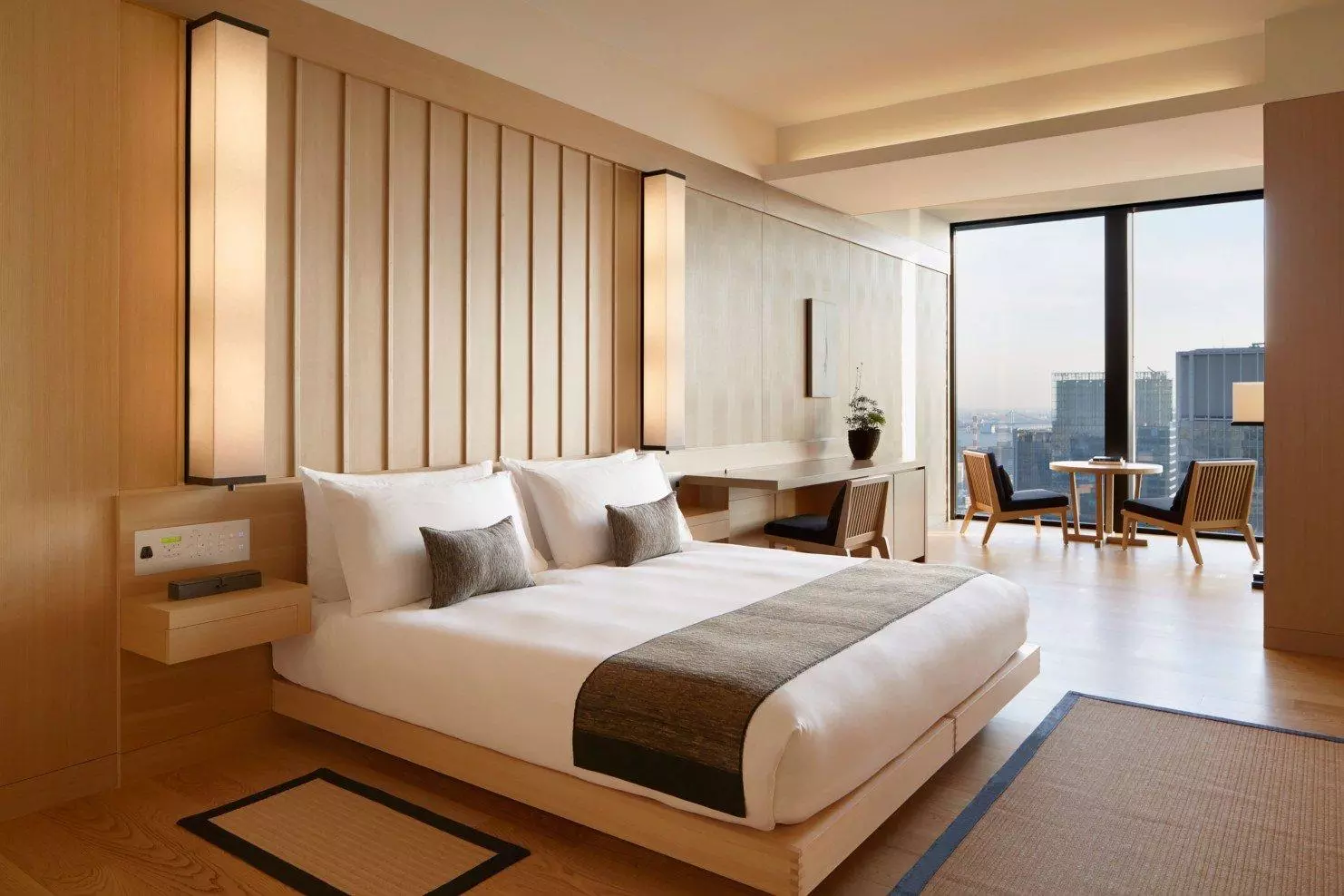
Japanese kitchen
The interior design of the kitchen in the Japanese style cannot be attributed to a particular mood. The kitchen can be warm and cozy, as well as restrained and spacious. You need to create an attractive and comfortable place to spend time with friends and family. As for the decor, with beautiful little things the interior of the kitchen will be perfect. Note the following: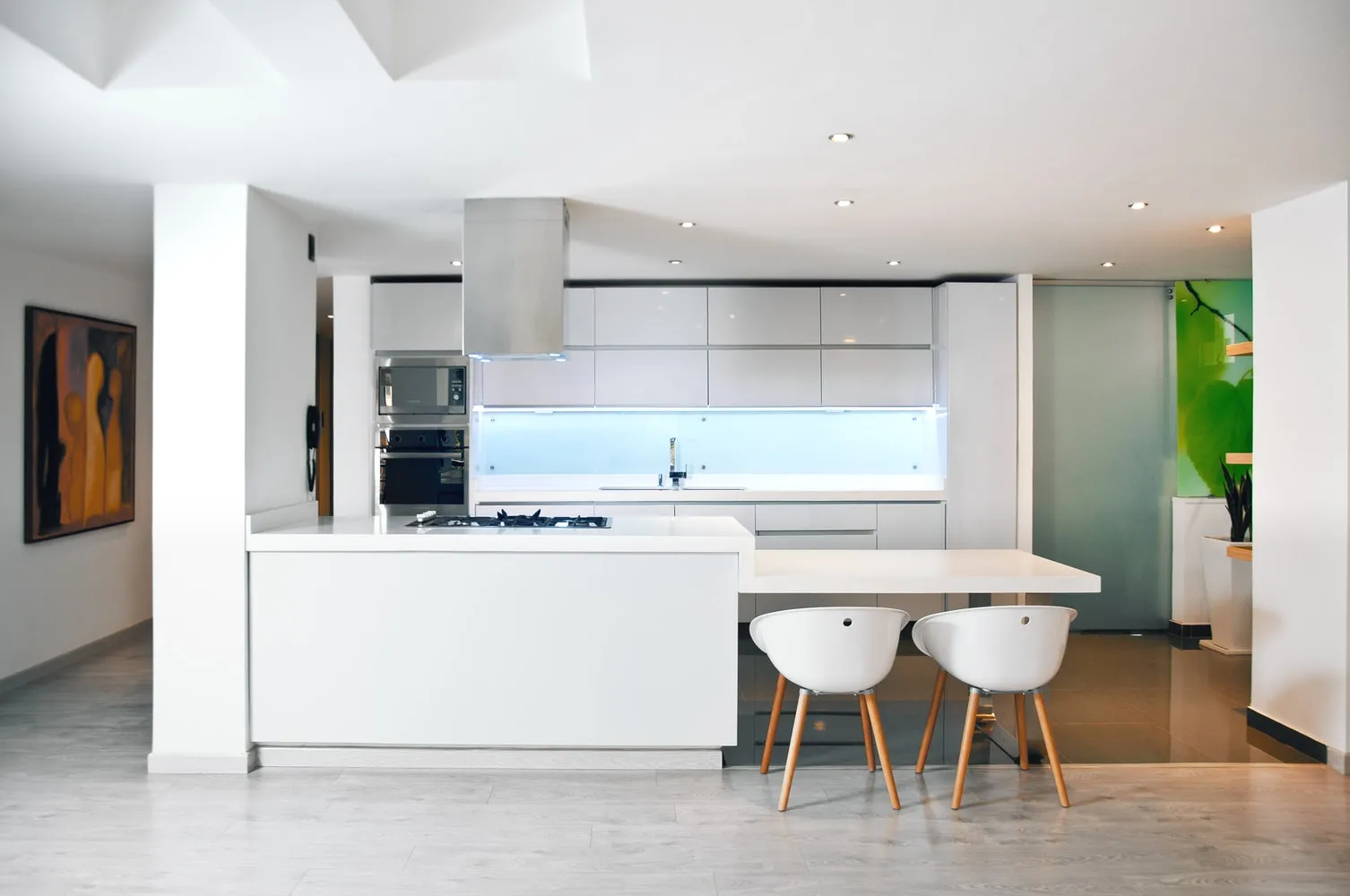
- Bamboo in a floor vase
- Panel with hieroglyphs or people
- Mats as seats or tablecloths
- Japanese-style dishes and chinaware: tea sets, bowls, plates
- Cotton Curtains
- Rice Paper Shades
Furniture in Japanese style
Furniture should be contrast, for example, from lacquered wood in black. The Japanese prefer the furniture of elegant designs on low legs. It can be a low coffee table, and you can use low ottomans and pillows placed directly on the floor as a place to sit.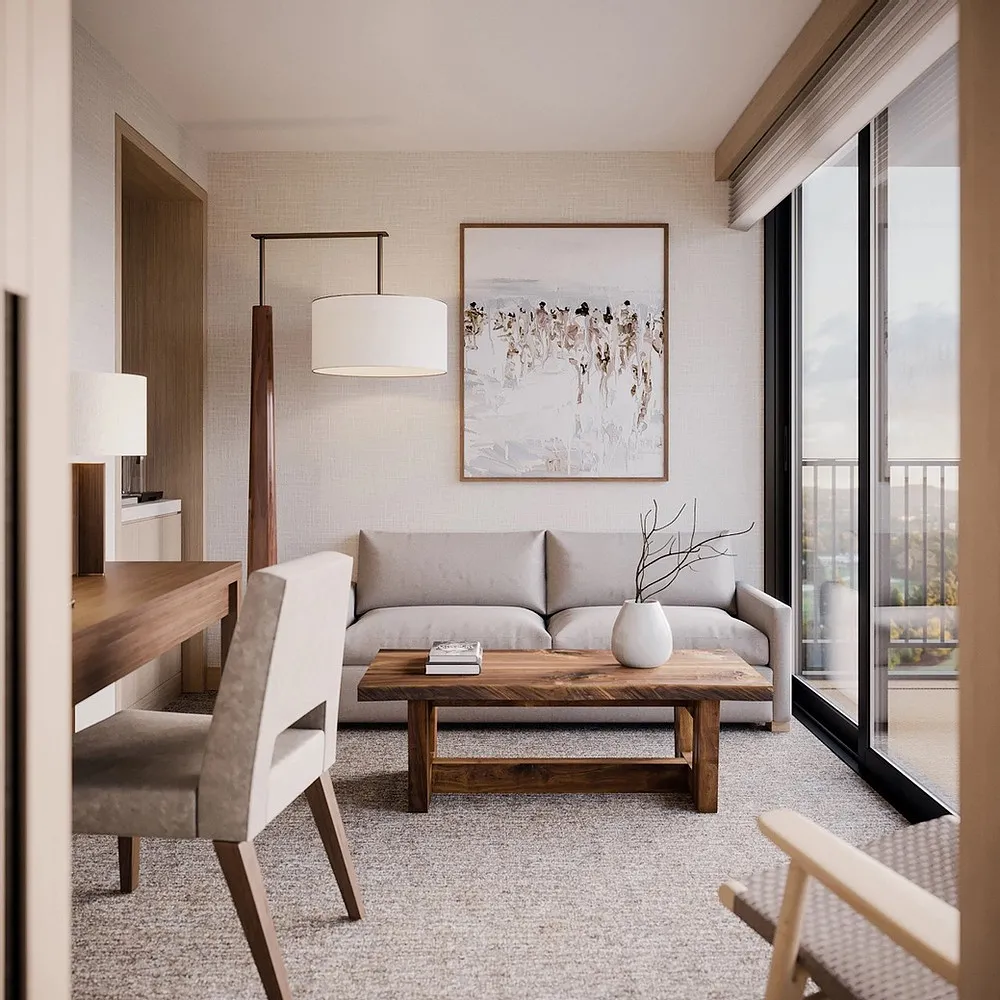
Living room
Traditional Japanese style
Minimalism in decor and simplicity of forms are signature features of the style. Therefore, should exclude unnecessary details, such as photographs, paintings, figurines and modern metal and glass decor items, from living room interior. Walls must be bright. You can buy white or cream wallpaper for the walls in the Japanese style on the fabric or plant-based.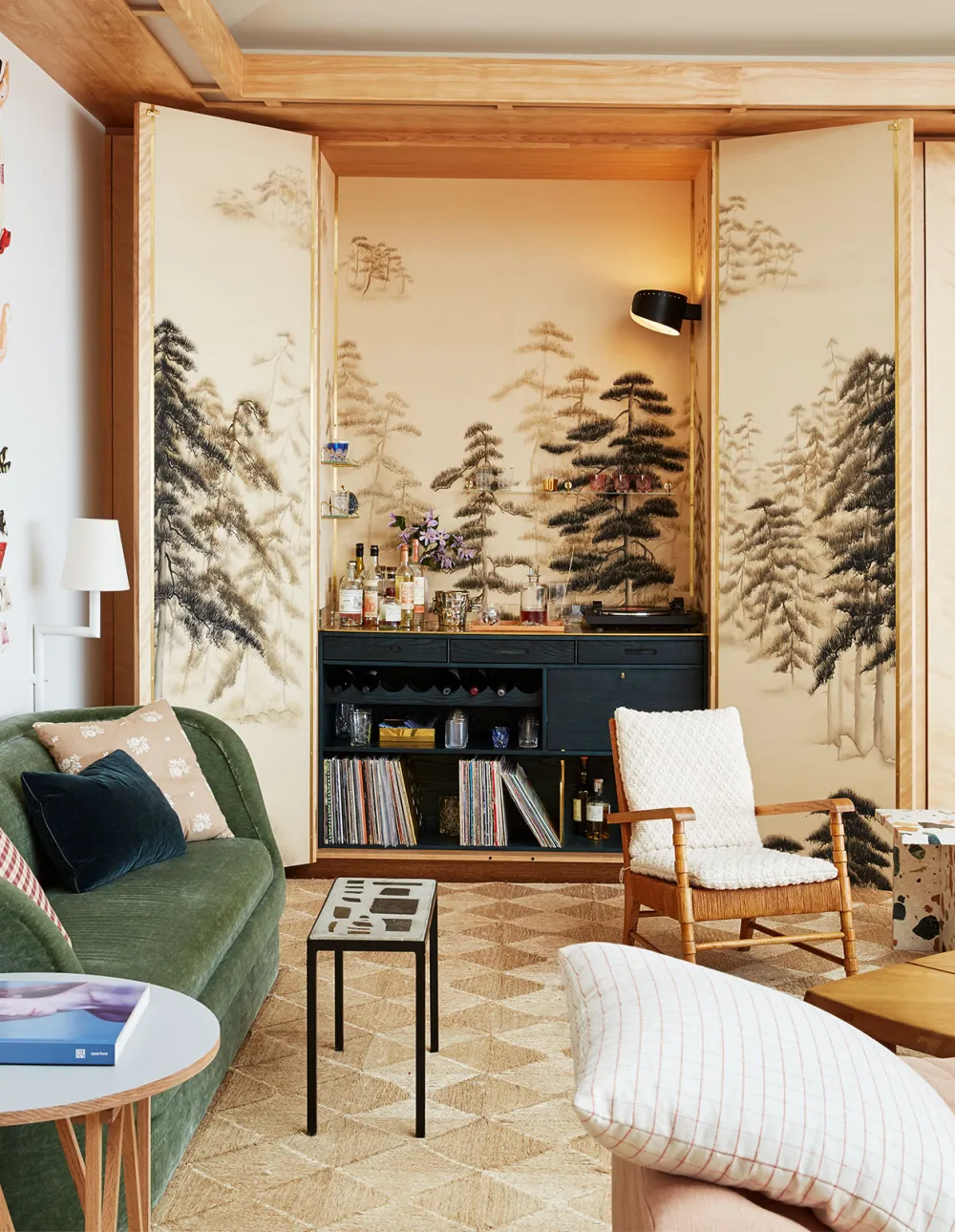
You can soften the severity and add more comfort with the help of traditional plants (bonsai), inscriptions from hieroglyphs, images of sakura branches, as well as authentic accessories (katana sword). Details such as a screen, curtains with contrasting images will complement a Japanese interior.The interior of the living room includes a flooring with bamboo or laminate flooring. Such floor is durable, practical to use, easy to clean and it does not afraid of temperature.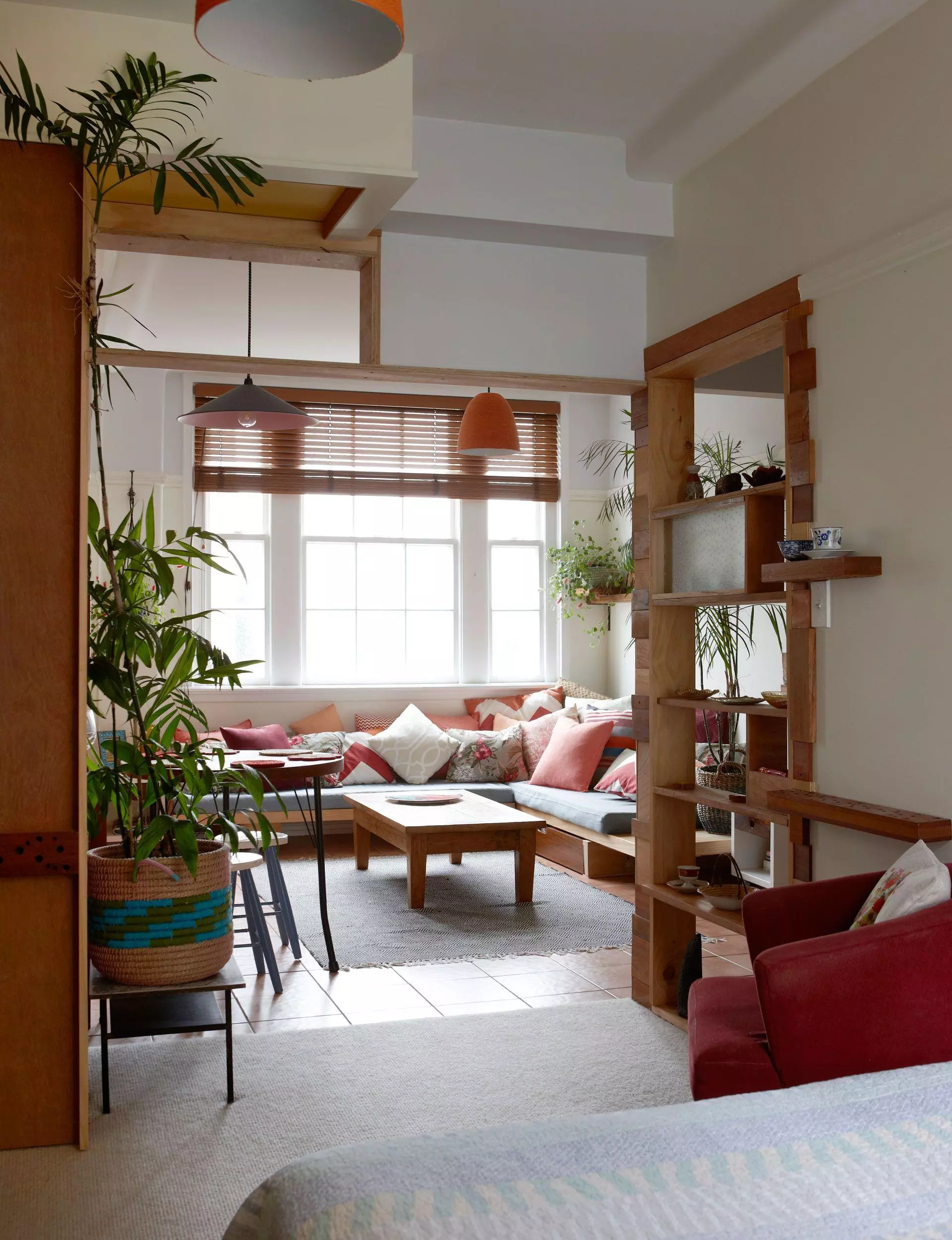
Traditional details have also found their place within the Japanese-styled decor, e.g., small racy table and pillows, located in the smallest room of the apartment and inviting to arrange a real tea ceremony.Those, who prefer warm natural tones and truly European comfort, would not be disappointed as well. The following photo demonstrates one of the most creative designers` projects. Despite the absence of connection between almost all interior elements and the Japanese style, while combined they successfully embody the lightness and simplicity, which are highly valued in the culture of the Land of the Rising Sun.
Modern Japanese Style
Inspired by Japanese motives, the key principles of eastern aesthetics named «Wabi», which means the absence of needless trumpery and deliberateness and the presence of elegance’s simplicity and practicability. There are light tinctures prevailing in the interior, making the premises look larger and fresher. Free and regular lines are constantly meeting the eye. At the same time small accessorizes and decor items are selected in accordance with another important aesthetic principle called «Yugen» (depth beauty of the item; element of understatement).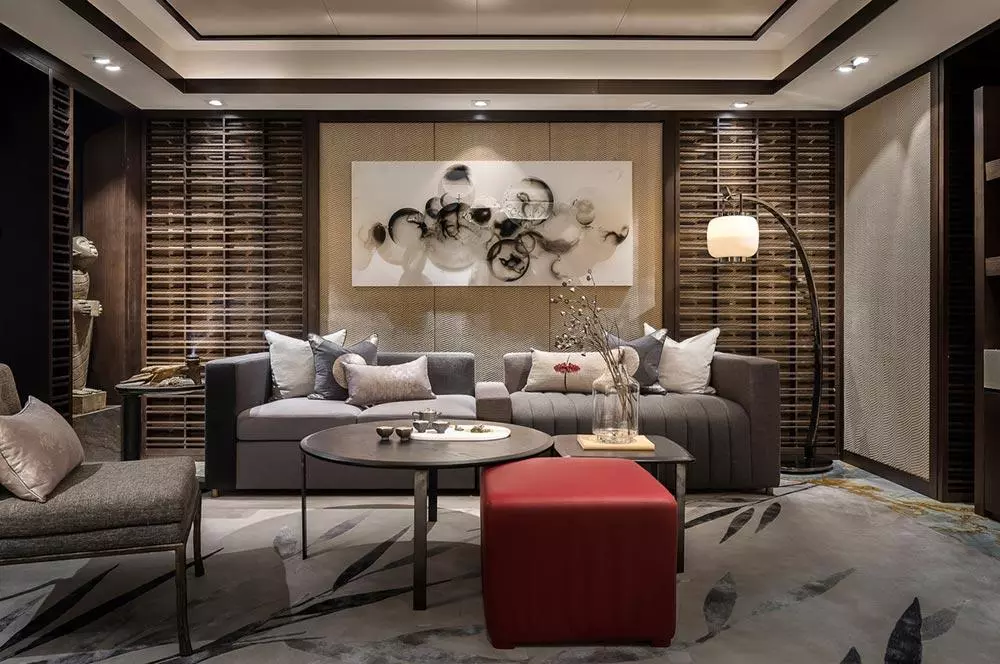
Modern Japanese interior style combines asceticism and comfort. Japanese style was at the height of popularity just recently. However, designers have refused from caricatural copying of traditional ethnic patterns in course of time and nowadays it’s not the style, but stylization in trend. With this article we would like to demonstrate the peculiarities of modern Japanese classic style. Modern Japanese interior style combines asceticism of the Land of the Rising Sun and comfort, habitual to the Europeans.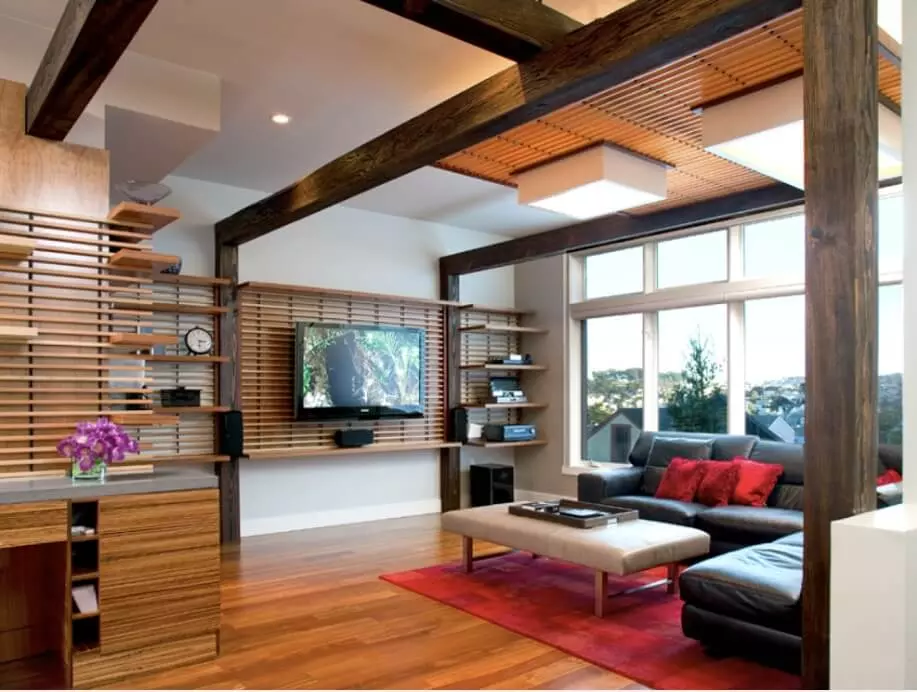
«Sabi» is the name of another interesting principle of eastern aesthetics, which is also worth mentioning. This word is literally translated as “corrosion” and is used to describe the matchless and unique beauty, which is attained by the item in length of time. In accordance with this principal designer create not only separate decor elements, but totally work over the interiors of entire rooms.Decoration of a balcony or a loggia in Japanese style is the next original solution, as this part of house should not be empty. It is possible to create mini-cabinet for study or work during the summer time.Japanese style seems to be appropriate only for adults’ rooms. Yet it is hard not to fall in love with the design of children’s room, created by a talented designer. Some color accents as well as simplicity and laconism of all details are able to create the perfect atmosphere for studies and cognition of the world around.
Japanese-inspired bathrooms
While all of the above tip’s work for any room, a Japanese-style bathroom requires a different approach. Bathing is an important ritual in Japan, so having a large, freestanding bathtub is a must. The centrepiece of a bathroom, these soaking baths encourage you to take a moment to relax after a long day. Finished with a white porcelain coating or made of teak wood, the bathtub can have either curved or angular forms.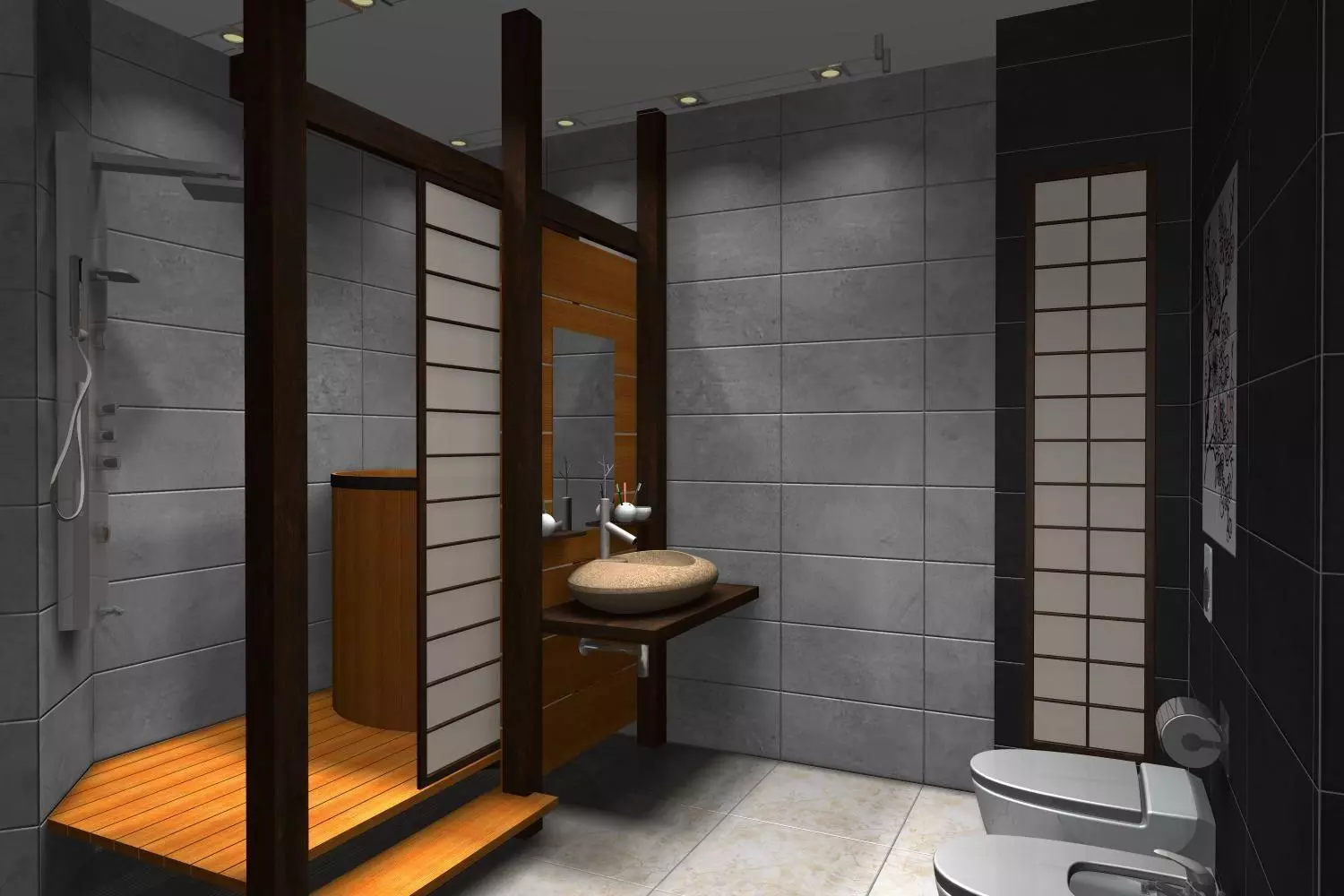
If you can’t install a freestanding bath, you can recreate the feel of a Japanese bathroom with other elements. Wood and stone go well together here, along with light or muted colors. A window that opens to a garden can easily connect this room to nature. Plant pots can also add a touch of greenery. Multi-functional stools and chairs that double as simple decorative accents are also a great choice. Tile or plank flooring, concrete walls, clean lines, and minimalist accessories in an uncluttered space can easily complete the look.Interior design is a constantly evolving algorithm. Trends resurface, new trends emerge and designers pay homage to styles originating from different cultures. The Japanese style home decor trend has gained traction for its minimalist approach, establishing spaces that project clarity and zen.


